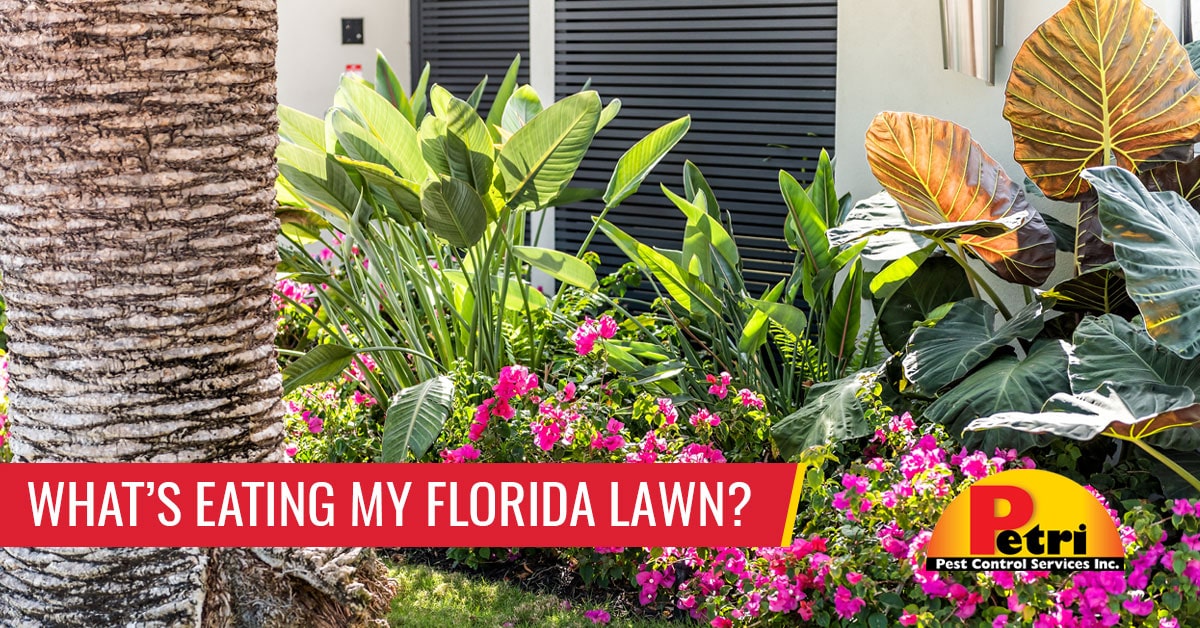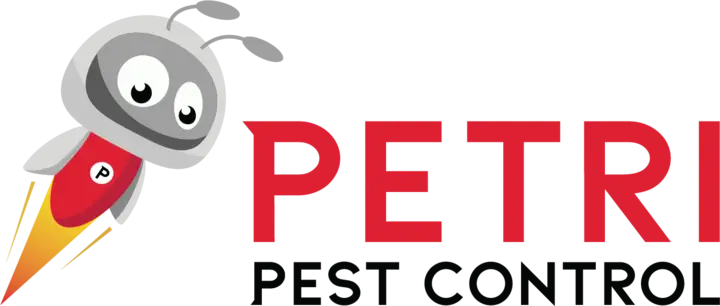
In South Florida, lush green lawns with a colorful composition of tropical ornamental landscaping are the stuff of picture postcards and the envy of everyone. A healthy lawn not only increases your property’s value but also reduces soil erosion, filters stormwater runoff, helps cool down the air and helps reduce glare and noise, according to the University of Florida’s Institute of Food and Agricultural Services (IFAS) extension. You might think that in this humid, temperate environment, healthy lawns are easy to grow and maintain. However, beautiful lawns in the sunshine state can be tricky for several reasons. Managing lawns is often misunderstood by homeowners, not getting the right mix of ingredients and timing can result in adverse effects on your lawn’s health. Overfertilizing and overwatering can do more damage than good. On top of that, many pests thrive in Florida’s lawns. Some of these pests are beneficial and some are up to no good when it comes to your lawn.
Lawn pests are a huge problem in Florida so here, we take a look at just what’s eating your Florida lawn. Topping the list of the pests chowing down on your grass and plants, the top 5 most common lawn pests include chinch bugs, sod webworms/armyworms, whitefly, mole crickets, and fire ants.
- Chinch Bugs
The most destructive chinch bug species, the Blissus damages wheat, corn, and oats, as well as various kinds of turfgrasses. While each type of chinch bug prefers a particular type of grass, it seems that just owning a lawn is an open invitation for chinch bugs. Difficult to see, chinch bugs can be identified by
- Distinct black, white, and red-spotted coloring
- Measure only about 1/8 to ¼ inches in length
- Sport hard bodies and wings that fold over their backs
Small populations of chinch bugs are common in most South Florida lawns and don’t cause problems; however, when these pests get together in large numbers, chinch bugs feed on your grass and plants, injecting a toxin that prevents grass and plants from getting nutrients and moisture from the soil. This causes your lawn and ornamentals to turn yellow and die. Preferring sunny areas, chinch bug damage is often mistaken for drought conditions.
- Sod Webworms/Armyworms
Also known as a major agricultural pest, sod webworms/armyworms are the larval stage, or caterpillars that will eventually grow into light tan, Spodoptera mauritia moths. Sod webworms/armyworms are gray-green and grow up to an inch long. These pests
- Curl up on the soil surface during the day and feed at night
- Are voracious eaters, feeding at a significant rate on grass blades
- Undermine the foundation of your lawn
Often, homeowners are unaware their lawn is in trouble until sections of grass start to separate from the lawn’s foundation. Other signs of sod webworms/armyworms damage include brown, irregular thinning of the lawn’s surface. After damage begins,
- Areas become stressed
- The lawn is subject to fungal diseases
- Lawns are more susceptible to other pathogens
You can check for sod webworms/armyworms by performing a detergent drench test on a small area of your lawn. If sod webworms appear, it means that sod webworms/armyworms are probably responsible for the damage. The good news is that with the correct watering and healthy lawn practices, your lawn can recover.
- Whiteflies
A common pest, whiteflies are more likely to attack ornamental plants than grass. If you notice whiteflies on your lawn, chances are, they came from your ornamental plants. With piercing-sucking mouthparts, whiteflies puncture the underside of leaves and suck fluids from plants. Often infestations can go unnoticed until leaves turn yellow or spotted and leaves begin dropping off unexpectedly. When a whitefly infestation is disturbed, clouds of whiteflies emerge from the plant. In South Florida, the most common whitefly species include:
- Silverleaf
- Ficus
- Citrus
Whiteflies attack many types of annual plants, as well. Eliminating whiteflies with insecticides isn’t usually the first line of defense because these chemicals can also eliminate whitefly predators that feed on a substance called “honeydew” that whiteflies, mealybugs, and aphids secrete, such as birds, ants, mosquitoes, wasps, and honey bees making the problem worse. Monitoring your plants by checking the undersides of leaves and by contacting a professional pest control service will help eliminate whiteflies.
- Mole Crickets
Should you detect tunneling in your lawn, particularly in Bahia lawns, you might have a mole cricket issue on your hands. A serious problem in Florida, mole crickets tunnel through roots and munch on shoots of grass, as well as other plant leaves. Three species of mole crickets make pests of themselves in the Southeast.
- Tawny: Larger and more robust than the southern mole cricket, tan-colored tawny crickets measure 1½ – 2 inches in length
- Southern: Dark brown to almost black, with four lightly colored dots on the top of their heads, southern mole crickets measure 1-1 ½ inches
- Short-winged: Dark to reddish-brown, with smaller wings than other mole crickets, short-winged mole crickets measure around 1 -1 ½ inches long and also have a u-shaped opening between their claws on their forelegs and by their pronotum
With large, shovel-like front legs, resembling those of moles, mole crickets dislodge plants from the soil when they tunnel. You can test your lawn for mole crickets by pouring a mixture of detergent and water on a small section of your lawn or purchase special worms that attack and eat mole crickets.
- Fire Ants
In South Florida, red imported fire ants build unsightly mounds on lawns and pose physical threats to humans and pets. Besides stinging intruders and inflicting powerful burning welts that hurt for days, fire ant venom can produce severe allergic reactions in sensitive people. An invasive pest, red fire ants were introduced to South Florida in the 1930s. More prevalent in well-manicured lawns in South Florida, red imported fire ants can also
- Build nests under trees and stumps
- Damage sidewalks and other pavement by building nests under them
- Cause structural damage or destruction building nests under foundations.
- Set up shop inside electrical equipment and utility housings causing short circuits
Once a pest with no natural enemies in the US, fire ants now have an enemy, due to invasive crazy ants, the number of red fire ants has dropped dramatically. Crazy ants, named for their erratic movement patterns can cover themselves with formic acid that neutralizes red fire ant venom. Most likely an adaptation developed to fend off fire ants in their native South America, crazy ants present more complicated issues for homeowners, than red fire ants as they don’t politely stay in one area of your yard but invade everything, including electrical housings.
Petri Solutions for a Green, Healthy Insect-free Lawn
To protect your South Florida lawn year-round, Petri Pest Control offers a few lawn and shrub care options you will want to consider.
- Total Lawn Program (TLP) – An all-inclusive lawn-spraying treatment plan
- General Lawn Program – For assistance with insects and lawn diseases
- Add-on services – Tick and flea treatment, as well as shrub and tree feeding and treating
At Petri, we’re proud to offer our full suite of lawn care to home and business owners in Broward and Palm Beach counties from our Pompano Beach branch. Locally owned and operated since 1956, Petri Pest Control Services, Inc. specializes in indoor and perimeter pest control, lawn spraying, tree and shrub spraying and termite control services. Contact us to learn more and schedule a free consultation!
What’s Eating My Florida Lawn in Pompano Beach Look Out For These Top 5 Pests?
Pest Control in Pompano Beach and Boynton Beach

